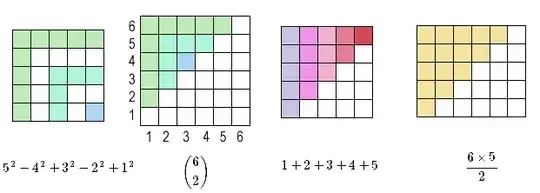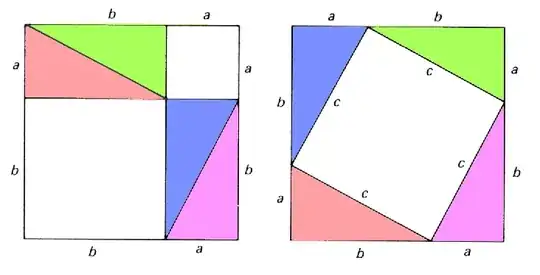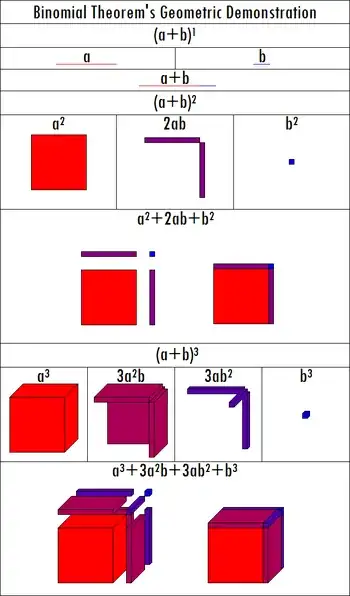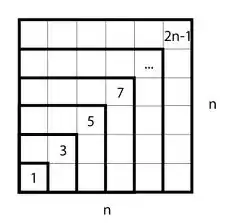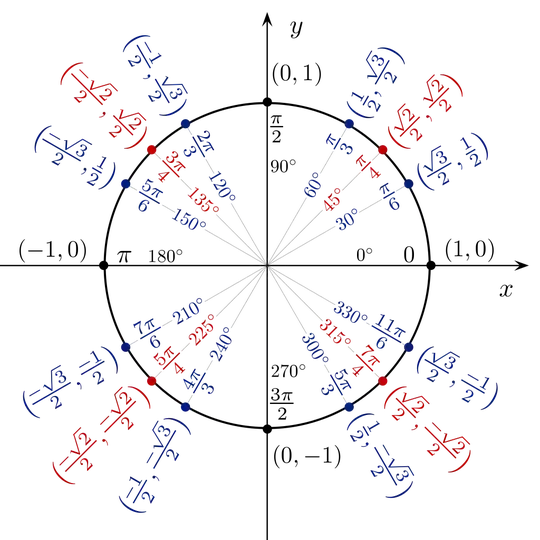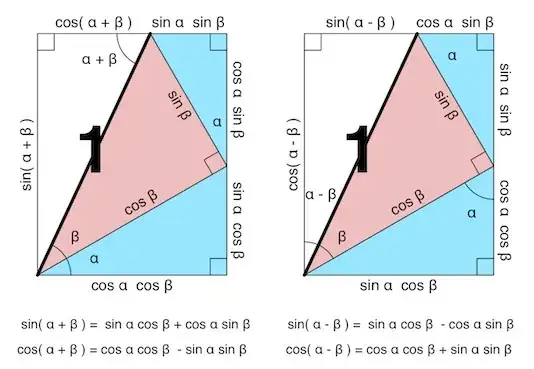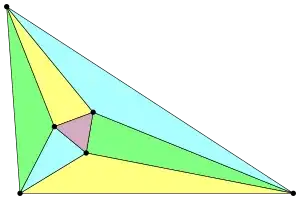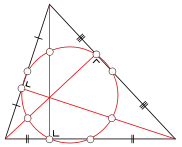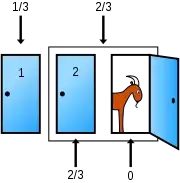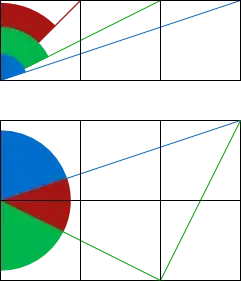Calculus
The proof that $\frac{22}{7} > \pi$.
$$ \begin {align*} 0 &< \displaystyle\int_0^1 \frac {x^4 \left( 1 - x \right)^4}{1 + x^2} \, \mathrm{d}x \\&= \displaystyle\int_0^1 \frac {x^4 - 4x^5 + 6x^6 - 4x^7 + x^8}{1 + x^2} \, \mathrm{d}x \\&= \frac {22}{7} - \pi. \end {align*} $$
Geometry
The Pythagorean Theorem.
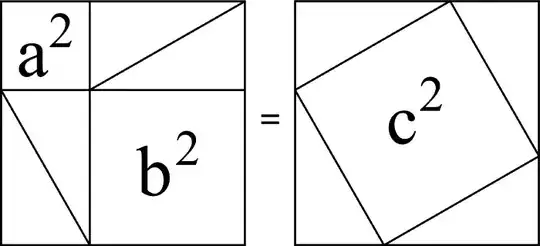
Algebra
Proof that $ \displaystyle\sum_{k=1}^{n} k^3 = \left( \displaystyle\sum_{k=1}^{n} k \right)^2 $: a proof without words.
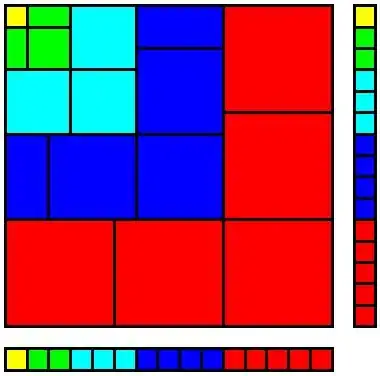
Number Theory
- Deriving Binet's Formula.
- Finding two irrationals $x,y$ such that $x^y$ is rational. If $x=y=\sqrt2$ is an example, then we are done; otherwise $\sqrt2^{\sqrt2}$ is irrational, in which case taking $x=\sqrt2^{\sqrt2}$ and $y=\sqrt2$ gives us: $$\left(\sqrt2^{\sqrt2}\right)^{\sqrt2}=\sqrt2^{\sqrt2\sqrt2}=\sqrt2^2=2.\qquad\square$$
Combinatorics
Binomial coefficients equal alternating sum of squares $-$ see leonbloy's answer.

On the left, you have the alternating sum as an inclusion-exclusion of squares: the total sum is the number of coloured cells.
On the right, you have those L shaped shapes rearranged in the top left of a 6x6 grid.
If you think of each cell as a coordinate $(x_1,x_2)$ that gives two elements chosen from the set $\{1, 2 \cdots 6\}$, it's seen that the elements are choosen with $ x_2 > x_1$, what corresponds to a combination (no repetition, and no order).
The others are well known, but, just for the sake of completeness...
$$\displaystyle \sum_{k=1}^n (-1)^{n-k} k^2 = {n+1 \choose 2} = \sum_{k=1}^n \; k = \frac{(n+1) \; n}{2}$$
As a side note, this link is excellent if you want to find your own and decide if proofs you see are actually nice.
Also, if you want to see a list of awesome proofs without words, see here.
